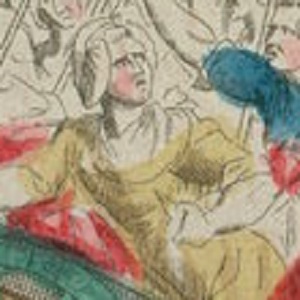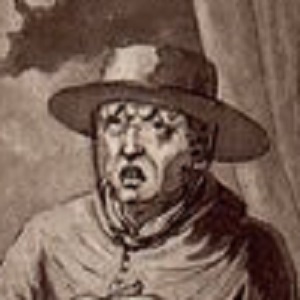Revolutions

An Example of Heroic Courage
In this rendition of an incident from the Vendée rebellion, an ordinary woman is shown standing up to the rebels. It comes from a series of heroic images of the Revolution and shows that women could be heroines for the Republic.

Debris of the French Army Returning to the Fatherland
Here, as in other critical images, reversal plays an important role. Proud soldiers have given way to a bedraggled collection of men, far removed from their former glory.

The Fountain of Regeneration
In this engraving of the Festival of Reunion or Unity of 10 August 1793, a female statue of Nature in the form of the Egyptian goddess Isis represents the regeneration of the French people. It sits on the site of the Bastille prison, whose fall signaled the beginning of the Revolution.

The Republic
Under the monarchy, the king was the country’s symbolic center. Removing him and establishing a republic made necessary not only a new constitution but also a new set of symbols.

Liberty
In this spectacularly vivid rendition of Liberty, she holds the Phrygian cap of freed slaves on a pike. That, combined with her colorful pants, suggests aggressive liberty. Yet the scrolls in her right hand also underscore the role of legislation in defining her purview.

The Triumph of Liberty
In this extraordinary painting stands a formidable and powerful figure of liberty with her pike and cap. As the title of this work suggests, Liberty appears here as a warrior surveying the field of battle from a commanding height.

Woman with a Basket in Front of a Door to the Prison
Despite the demure expression created by her huge eyes, this woman also shows adherence to the Revolution through her scarf, similar in shape and color to the Phrygian cap.

Day 1 of Prairial of the Year III
Men and women threaten the deputies on 20 May 1795. They demand "Bread and the Constitution of 1793." This day marked one of the last interventions of ordinary women into national politics.

To Versailles, To Versailles!
The women who arrived, though lightly armed, were no shrinking violets. They insisted that the royal family return to Paris where, in fact, they would find themselves under virtual house arrest.

Mea Culpa of the Pope
Although the revolutionaries long regarded the Pope as an enemy, their anger was stoked significantly by the papal decision to decree as unacceptable the Civil Constitution of the Clergy.